NCAA Division II Communication Rules: How Early Contact Changes Recruiting
Introduction
When the NCAA approved new Division II communication rules effective August 1 2024, many recruits didn’t realize how significant the change was. The rule now allows DII coaches to communicate with prospective student‑athletes (PSAs) at any age—a major shift from the prior restriction that mirrored Division I’s June 15 contact date. As a former college coach, I’ve already seen this change accelerate recruiting timelines. In this post, I’ll explain what the new rule means, how it differs from Division I, and how you can use early contact to your advantage.
What Changed in Division II Recruiting?
- Unlimited communication: DII coaches can email, call, text or DM prospects of any age. Face‑to‑face contact (visits) is still prohibited until June 15 after a prospect’s sophomore year, but virtual communication is open.
- Contrast with Division I: Division I coaches cannot engage directly until June 15 after a prospect’s sophomore year. DII’s earlier contact allows athletes to build relationships sooner.
- NCAA rationale: The updated rule aims to level the playing field across sports and allow DII programs to identify talent earlier.
Why Early Communication Matters
- Get on coaches’ radars sooner: Early contact gives you additional time to showcase improvement and interest.
- Valuable feedback: You can receive honest assessments from DII, DIII, JUCO and NAIA coaches before your junior year.
- Develop interview skills: Phone or Zoom conversations with coaches build confidence and help you practice talking about your goals.
How to Prepare for Early Recruiting Conversations
- Create a communication plan: Outline which schools interest you and craft personalized introductory emails. Share your GPA, test scores and highlight video.
- Build your online profile: Maintain an up‑to‑date recruiting profile with game film, academic information and contact details. Social‑media profiles should be professional (see our social media guide).
- Stay organized: Track communications, camp invites and deadlines. Early contact can accelerate your timeline, so keep a recruiting calendar.
- Be honest about fit: DII offers scholarships, but roster spots and budgets vary widely. Ask coaches about roster needs, scholarship availability and academics.
Making the Most of Early Feedback
When a DII coach gives you feedback, use it to refine your development plan. For example, if a coach notes that you need to improve your speed of play, incorporate targeted drills and track your progress. Share updates with the coach to demonstrate growth. Coaches appreciate players who take constructive criticism seriously.
Balancing DII with Other Pathways
Even if you dream of playing Division I, leveraging DII communication can boost your overall recruitment. DII programs often have strong academics, more balanced schedules and generous scholarships. Moreover, building relationships with DII, DIII and NAIA coaches increases your exposure across multiple levels.
Conclusion and CTA
The new DII communication rule opens doors—if you know how to use it. Start connecting with coaches early, seek feedback, and remain proactive about your development. Need help crafting your first emails or planning campus visits? Schedule a free consultation with me and let’s build a recruiting strategy tailored to your goals: Book now.
